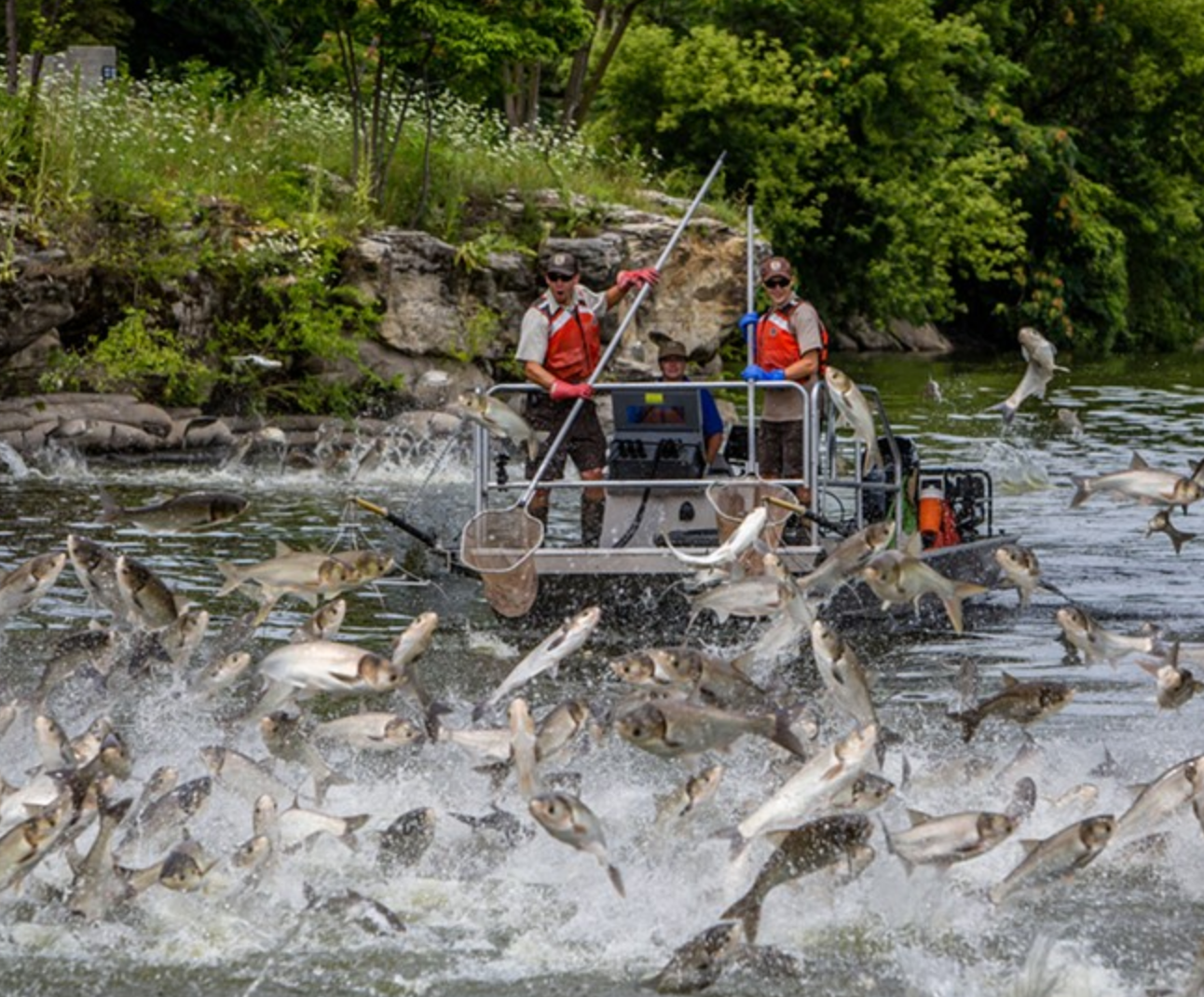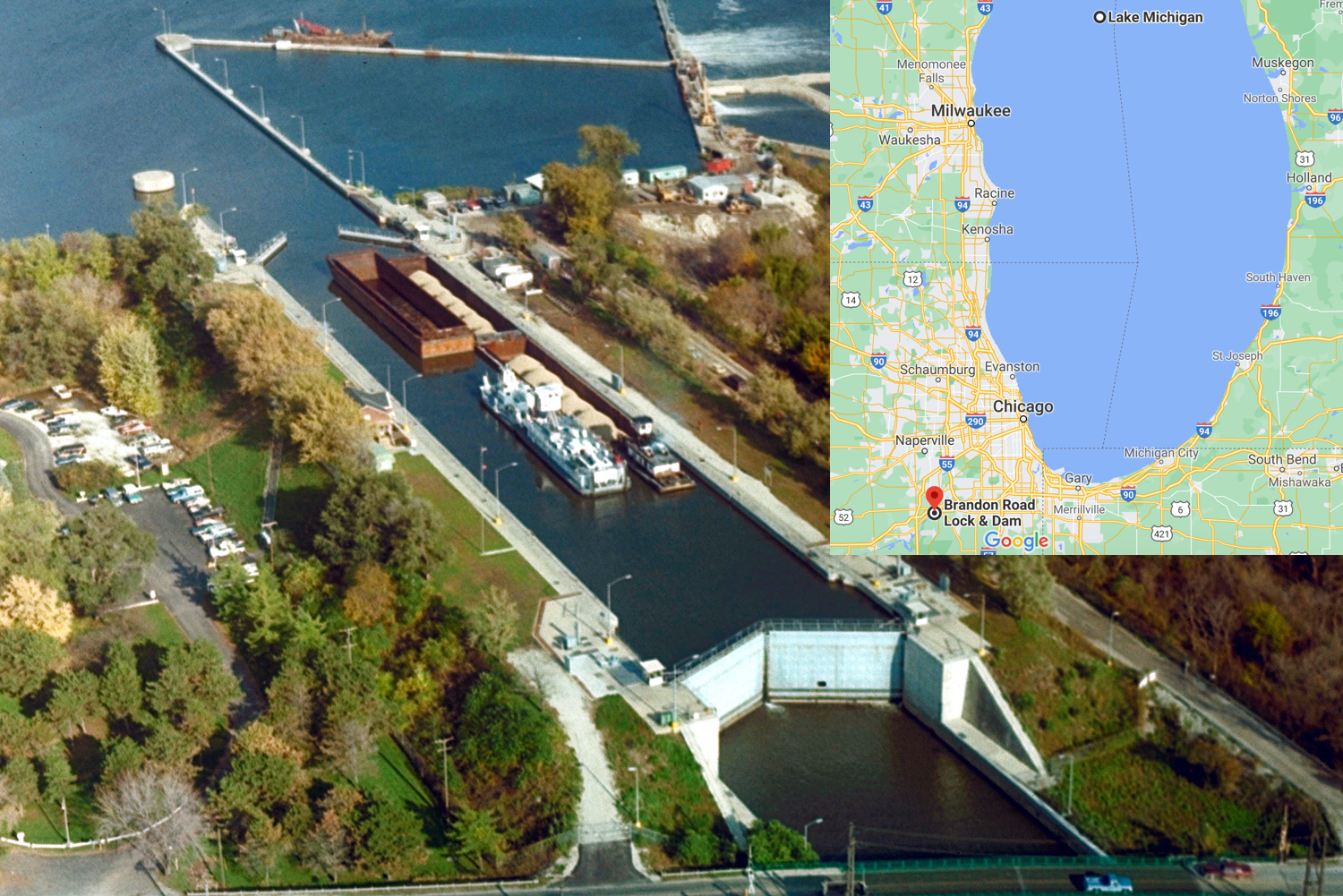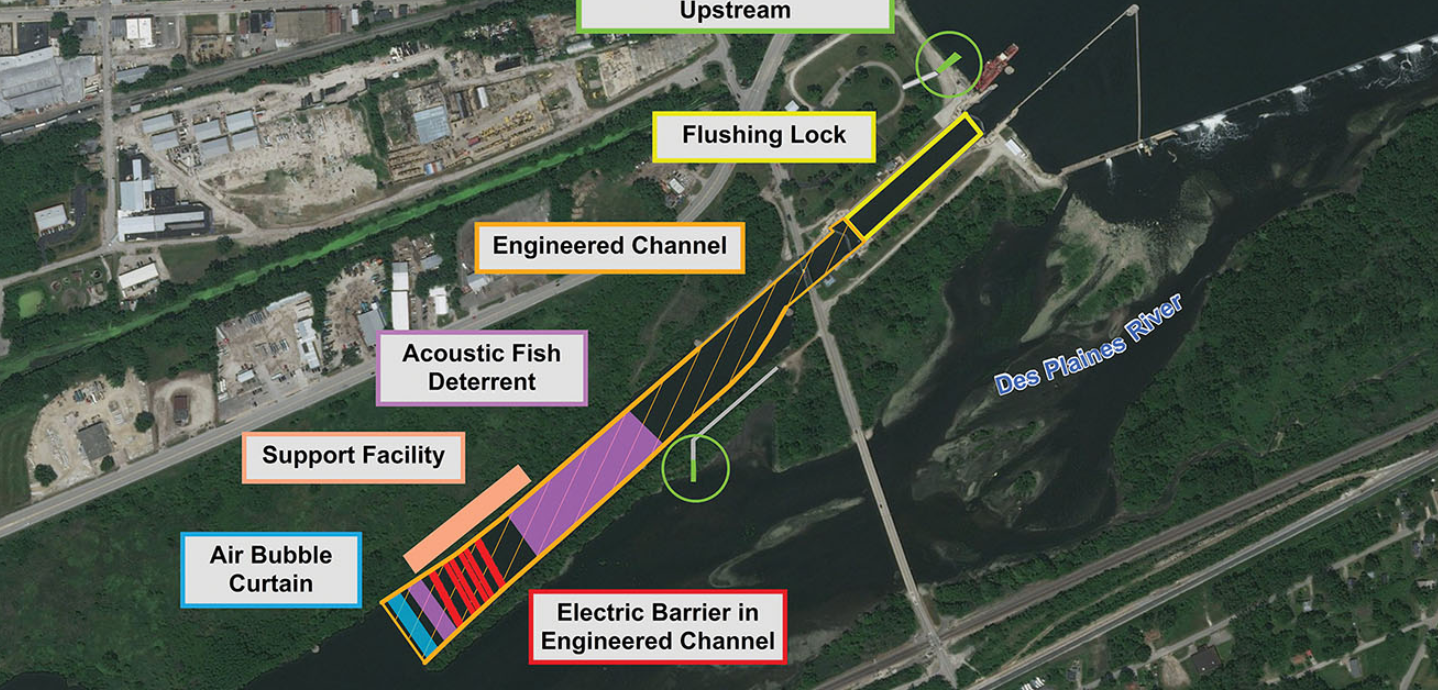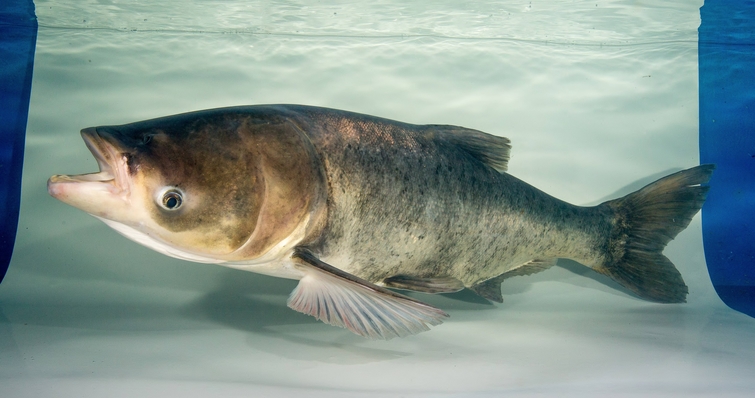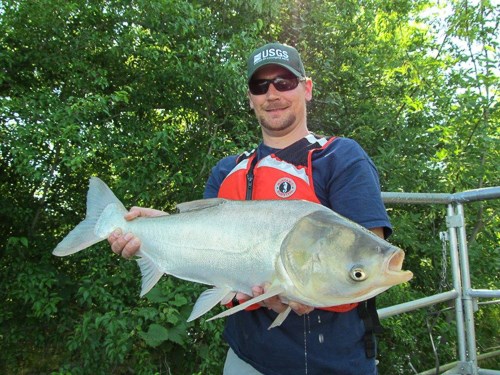Michigan and Illinois Join Forces to Battle Asian Carp
The governors of Illinois and Michigan announced that they will work cooperatively to protect the Great Lakes from invasive Asian Carp. The joint effort is focused on the Brandon Road Lock and Dam in the Chicago Area Waterway System near Joliet, Ill., which is considered a critical point for keeping bighead, silver and black carp — the invasive Asian carp species of greatest concern — out of Lake Michigan and the Great Lakes.
Multimillion Dollar Effort
Governor Gretchen Whitmer of Michigan and Governor JB Pritzker of Illinois announced an intergovernmental agreement between the Illinois Department of Natural Resources and the Michigan Department of Natural Resources. It gives Illinois permission to use up to $8 million in funds appropriated in 2018 by the Michigan legislature to support the preconstruction engineering and design phase of the Brandon Road Ecosystem Project.
Illinois signed a separate agreement with the U.S. Army Corps of Engineers for the initial Brandon Road design. The state will serve as the non-federal sponsor, agreeing to help fund the design of a portion of the project and to further advance full project design efforts to approximately 30% completion.
High-Tech Challenge
The Brandon Road Project will install layered technologies including an electric barrier, underwater sound, an air bubble curtain and a flushing lock in a newly engineered channel designed to prevent carp movement while still allowing vessel traffic.
Asian carp were originally introduced in the southern United States as a way to deal with algae and to clean the waters in fish farms in the 1970s. Bighead and silver carp escaped the farms during a flood and they made their way to the Mississippi River basin. They have been steadily making their way north ever since. The migration of bighead, silver or black carp to the Great Lakes could impact the region’s $7 billion fishery, $16 billion boating and tourism industries and others who rely on the waterway and its tributaries.
